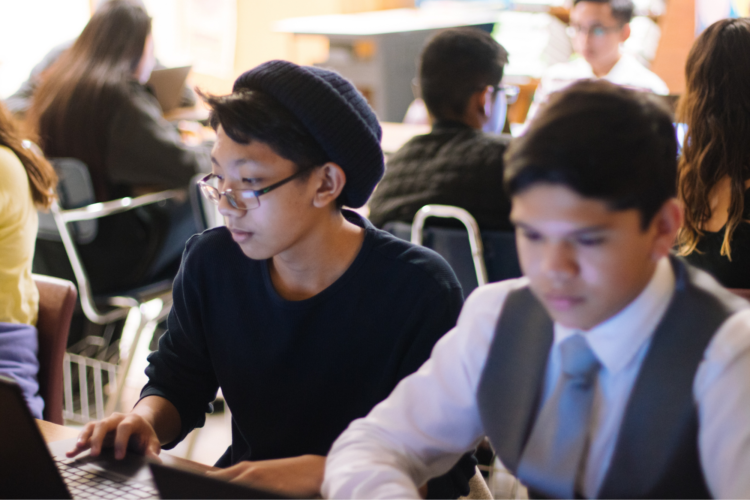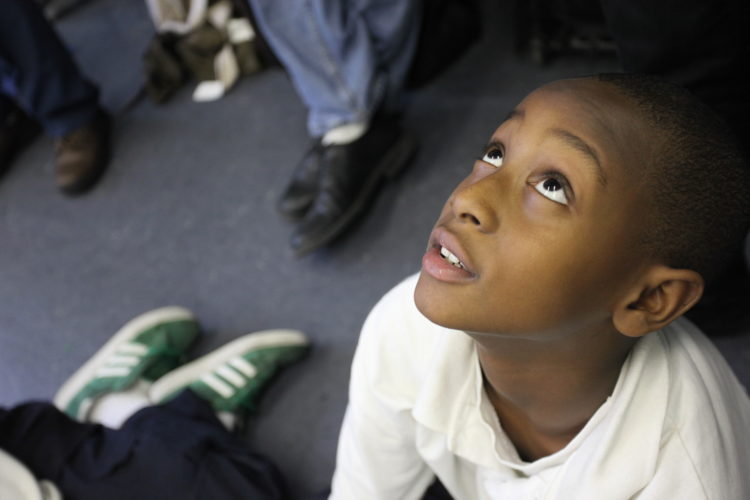John H. Laub is Distinguished Professor Department of Criminology and Criminal Justice at the University of Maryland, College Park. From 2010 to 2013, Dr. Laub served as the Director of the National Institute of Justice in the Office of Justice Programs in the Department of Justice. His new paper, Understanding Inequality and the Justice System Response: Charting a New Way Forward, looks at what we know about inequality in the justice system and outlines areas where researchers might focus their efforts.
To what extent does the research reviewed in your paper help us understand recent high-profile events involving inequality in the justice system?
Although my paper did not directly address the use of force by the police, I do think it underscores the potential consequences that arise when segments of the population feel disconnected and distrustful of government institutions, especially the police. If we are serious about reducing the tendency of the criminal justice system to exacerbate inequality, we need to build strong police–community relationships. I think a key topic for future research is to examine the role of race relations in building strong police–community relationships. Ultimately, we want to know if communities with strong and respectful police–community relationships have less justice system generated inequality.
How does social inequality factor into the responses to criminal behavior by the justice system?
I think the major question is does social inequality play a role in crime causation. I believe that it plays a large role. The behavioral differences we see in serious criminal activity are the result of many factors including social inequality. Growing social inequities with respect to families, schools, and neighborhoods influences child and youth development and may extend into adult development as well. In my paper, I refer to these as input to the justice system. It manifests itself in a variety of domains, including criminal activity. Even before criminal justice system involvement, social inequalities can influence who is going to commit crime and who is not. Therefore, if society remains divided in terms of inequality, then we are going to see a divide in terms of criminal activity.
The criminal justice response is what I refer to in the paper as output from the system. It is well recognized that there is differential processing by age, gender, race/ethnicity, and socioeconomic status throughout the justice system. The justice system response is also linked to neighborhoods; that is, neighborhoods with more concentrated disadvantage see more police activity, for example, than other neighborhoods.
When it comes to inequality, are policing and justice system policies doing more harm than good? Do they exacerbate existing inequality?
This is a challenging area of research and it is important to take into account selection effects to assess whether the policies in question are indeed causing more harm than good. The evidence is suggestive that the justice system is exacerbating inequality and is doing more harm than good. I believe more research is needed on the collateral consequences of system involvement, ranging from police contact to incarceration. The collateral consequences of being arrested or incarcerated, with respect to employment, education, housing, and civic life can have lifelong effects. One area that we know very little about is the role of criminal justice plays in fostering intergenerational inequality.
For example, Alice Goffman writes that policing and imprisonment in poor Black neighborhoods are transforming community life for the young men who are the targets, their family members, partners, and neighbors. Sarah Brayne has done research on what she coins “system avoidance”—youth and young adults who have had contact with the criminal justice system are making decisions not to engage with, labor markets, and educational establishments—the very institutions that research has shown to help turn their lives away from crime. In other research, Liberman, Kirk, and Kideuk, found that once kids have been arrested, they are more likely to be arrested again, whether they have offended again or not. Certainly, there are some bad kids out there, kids who commit violent crimes, but what concerns me is painting all youth with broad brushes. Research tells us that there is a small group of kids who commit a disproportionate amount of crime, but there is this notion that every kid that commits a crime is bad. Or, worse yet, that every black kid is bad, whether or not they’ve committed a crime. This really concerns me.
What is the relationship between a young person’s connection to school and/or work and criminal behavior?
There is a fair amount of empirical evidence that strong attachment/commitment to school is an important correlate of juvenile delinquency; that is, kids who stay in school, like school, and like their teachers tend not to be delinquent. We also know that a strong connection to work, especially in young adulthood, is associated with crime reduction. Unfortunately, when we have kids who get into trouble in school, there is little effort to keep them there while they work out their problems. Instead we isolate and marginalize these kids who are then less likely to complete their education. This typically results in more crime and more incarceration. That’s one of the reasons people use the expression “school to prison pipeline.” We have to figure out how to deal with kids who misbehave and how to re-engage them when they do. If they have to leave school and enter the juvenile justice system, or are sent to juvenile detention, we have to figure out how they can re-enter conventional institutions without insurmountable barriers. That said, we are lacking solid research evidence as to how we can go about creating strong connections to school and work.
Which juvenile justice policies would you call out for reform or want to revisit?
One strategy is to reform existing juvenile justice policies and revisit the policies that were popular in the 1970s: decriminalization, diversion, due process, and deinstitutionalization.
Suggestions for policy experiments that I discuss in my paper are:
- Decriminalization: We should reduce the number of legal rules and/or organizational rules such as zero tolerance policies in school. In addition, limiting the processing of juvenile offenders in adult court is critical. The processing of juvenile offenders in adult criminal court should be rare and used only as a last resort.
- Diversion: Justice officials should not legally process first time, non-serious, and/or low risk offenders. This would allow these offenders to avoid the potentially destructive and damaging aspects of the justice system, as well as prevent the stigma resulting from collateral consequences of involvement in the justice system. My concern is what happens to high school completion and college enrollment after kids are processed in the juvenile justice system.
- Due Process: Extend all constitutional protections to all juveniles who are processed in the justice system.
- Deinstitutionalizaton: Offer alternatives to detention and out-of home placement. By keeping juveniles in the community educational goals will not be compromised. Use correctional institutions as the last resort when all alternatives have been exhausted.
You argue that addressing inequality in the justice system starts with addressing broader societal issues, such as concentrated poverty and inequality. Why do we need to address issues of equity more generally in order to address inequality in the justice system?
The problem of inequality in the justice system is complex, and there is a tendency for discussions of the topic to draw on ideological positions rather than scientific evidence. For instance, it is my view that some of the racial disparities we see in the justice system are the result of differences in criminal activity. This is especially the case for violent crime. And, as indicated earlier, there is a relationship between social inequality and criminal behavior. Therefore, if we focus on the larger issue of social inequities with respect to family structure, culture, schools, neighborhoods, etc., we will, in part, reduce disparities that we now see in the justice system by decreasing criminal behavior. That said, it is also important to focus on reforming justice system policies that contribute to and deepen existing inequalities.
There seems to be a lot of data in the field, in terms of offender demographics, but other types of evidence are lacking. Which areas are most ripe for new research?
We need more and better data on the basics regarding criminal offenders. Our national data on race and ethnicity are particularly poor and shockingly out of date in light of the rich race and ethnic diversity we now see in America. In addition to race and ethnicity, we need to gather better data on factors like socioeconomic status and neighborhood context.
We also need to gain a better understanding of the experience of being involved with the justice system and its subsequent consequences for development. This holds true for encounters with the police as well as experiences of confinement in prisons and jails. From a human development standpoint, we don’t know a lot about how criminal justice system processing affects development. We used to talk about the role of schools, families, and peers on development, and then in the 80s, driven by William T. Grant Foundation research, we added neighborhoods. Given the pervasiveness of the criminal justice system, we now have to add this to the mix. Related to this, but on the front end, we need to learn more about how frequent police contact affects kids’ perceptions of the police and other authority figures.
We also need more data that would help us better understand the victim–offender overlap, especially among young male minorities who have the highest rates of both offending and victimization in crimes like homicide. This overlap is also associated with residential segregation and concentrated disadvantage.
From your perspective as the former director of the National Institute of Justice, what would you say should be the role of government in supporting research to address these issues?
The National Institute of Justice is the research, evaluation, and development arm of the Department of Justice. Under the leadership of Attorney General Holder, the Justice Department and the National Institute of Justice have focused on fairness and reducing bias in the justice system. To illustrate, NIJ has sponsored research on racial profiling in policing, evaluations of efforts to enhance procedural justice and legitimacy in the justice system, and evaluations of efforts to expand access to justice for those that are poor in our research program on indigent defense. NIJ’s mission is to provide objective and independent knowledge and tools to reduce crime and promote justice, so I viewed a focus on the underlying reasons for justice system inequalities as an important part of the research agenda at NIJ. Moreover, efforts to reduce the real exacerbation of inequality by justice system policies and programs must be tested and rigorously evaluated.




